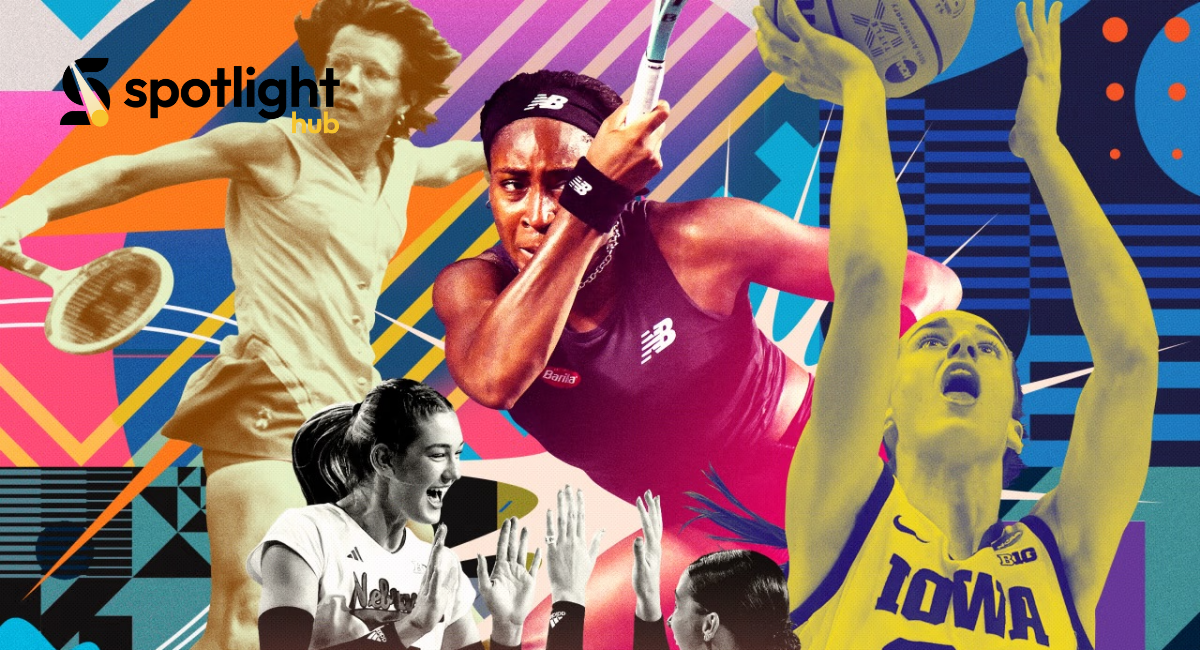Women’s sports have come a long way, but the journey is far from over. For decades, female athletes have faced barriers whether it was the lack of opportunities, unequal pay, or simply being taken seriously in their respective sports. However, women in sports have continually broken these barriers, setting records, changing the game, and inspiring generations of girls around the world. In this blog, we’ll take a look at how women’s sports have evolved, the challenges they’ve overcome, and the exciting future ahead.
Overcoming Gender Stereotypes in Sports
For much of history, women were discouraged from participating in competitive sports. It was widely believed that sports were too “rough” or “unfeminine” for women. In fact, women were often excluded from the Olympic Games and other major sporting events simply because of their gender. But over time, female athletes began to challenge these stereotypes, proving that they could not only compete, but excel.
Athletes like Billie Jean King, who famously defeated Bobby Riggs in the 1973 “Battle of the Sexes” tennis match, and Wilma Rudolph, who became the first American woman to win three gold medals in a single Olympic Games, were trailblazers who pushed against these societal norms. Their accomplishments sent a clear message: women are capable of greatness in sports.
Breaking Records and Setting New Standards
As more women gained access to sports and received the recognition they deserved, they started breaking records and setting new standards in ways that had never been done before. Today, we have female athletes competing at the highest levels, breaking barriers and inspiring new generations of girls to dream big.
For example, Serena Williams has rewritten the record books in tennis, holding 23 Grand Slam singles titles, the most by any player in the Open Era. Her dominance on the court has proven time and time again that women can be just as competitive as men in the world’s most prestigious sports.
Similarly, Simone Biles has redefined gymnastics with her unmatched strength, skill, and artistry, making her one of the greatest gymnasts of all time. Her accomplishments, both in the Olympics and beyond, continue to raise the bar for what is possible in women’s sports.
The Growth of Women’s Sports Leagues
As more women have entered the professional sporting world, women’s sports leagues have been growing and gaining attention. While leagues like the WNBA (Women’s National Basketball Association) and WTA (Women’s Tennis Association) have been around for decades, they have continued to evolve, and now we are seeing more media coverage, increased sponsorships, and higher salaries for female athletes.
For instance, the National Women’s Soccer League (NWSL) has grown exponentially, attracting more talent, fan support, and television viewership. The U.S. Women’s National Soccer Team, which has won multiple World Cup titles, continues to lead the charge for gender equality in sports, advocating for equal pay and recognition alongside their male counterparts.
Similarly, the rise of women’s cricket, rugby, and eSports leagues has opened new doors for female athletes. As the world becomes more accepting of women in sports, we can expect to see even more leagues and competitions spring up, offering even more opportunities for female athletes.
Achieving Pay Equality in Sports
One of the most significant challenges women in sports have faced is unequal pay. For years, female athletes were paid far less than their male counterparts, despite achieving similar or even greater levels of success. Thankfully, in recent years, the fight for pay equality has gained momentum, and women in sports are slowly closing the gap.
The U.S. Women’s National Soccer Team (USWNT) is one of the most high-profile examples of this movement. Their fight for equal pay with the men’s team received widespread attention, leading to a landmark settlement in 2022, which provided equal pay for the women’s and men’s teams for games played for the U.S. Soccer Federation.
Similarly, tennis has made strides toward pay equality, with major tournaments like Wimbledon, the U.S. Open, and the French Open offering equal prize money for men and women. While there is still work to be done in many sports, the progress made so far is a testament to the power of athletes and fans demanding change.
The Future of Women’s Sports
The future of women’s sports looks brighter than ever. As more women break records, win championships, and take on leadership roles in sports organizations, the opportunities for female athletes will continue to grow. We are seeing increased investment in women’s leagues, more media coverage, and better sponsorship deals, all of which will help push the movement for gender equality forward.
Additionally, the rise of women’s representation in coaching and sports management roles is paving the way for even more change. Female coaches like Becky Hammon (NBA’s San Antonio Spurs) and Sarah Thomas (NFL referee) are breaking barriers in traditionally male-dominated areas of sport, showing that leadership opportunities are expanding for women across all levels of athletics.
The visibility of female athletes continues to inspire a new generation of young girls who now have role models to look up to. This increased representation and success at the highest levels will only continue to push the boundaries of what is possible.
Benefits of Increased Focus on Women’s Sports
1. Inspiration for Future Generations
Female athletes are powerful role models, showing young girls everywhere that they can achieve greatness in sports. This inspiration motivates girls to stay active, pursue their passions, and believe in their abilities, both in sports and beyond.
2. Promotion of Gender Equality
When women succeed in sports, it challenges outdated stereotypes and promotes equality across all aspects of life. This has a ripple effect, influencing other areas like the workplace and education, where women continue to fight for equal opportunities.
3. Increased Media Exposure and Investment
As women’s sports gain more attention, they attract larger audiences, leading to increased media coverage and investment. This, in turn, improves the financial stability of women’s sports and increases opportunities for athletes to make a living doing what they love.
4. Health and Well-being
The growth of women’s sports encourages more women to stay active and pursue athletic goals. This not only improves physical health but also boosts mental well-being, as participating in sports has been linked to increased confidence, teamwork, and personal satisfaction.
Conclusion
The evolution of women’s sports has been nothing short of inspiring. From overcoming stereotypes and breaking records to achieving pay equality and building thriving leagues, women in sports have proven that they belong at the highest level. The continued growth and visibility of female athletes are paving the way for future generations, and as support for women’s sports continues to grow, the barriers that remain will continue to fall.
Women are no longer just making their mark in sports, they are defining the future of athletics. By supporting women’s sports and celebrating their successes, we all contribute to a more equal, diverse, and exciting sporting world for years to come.










